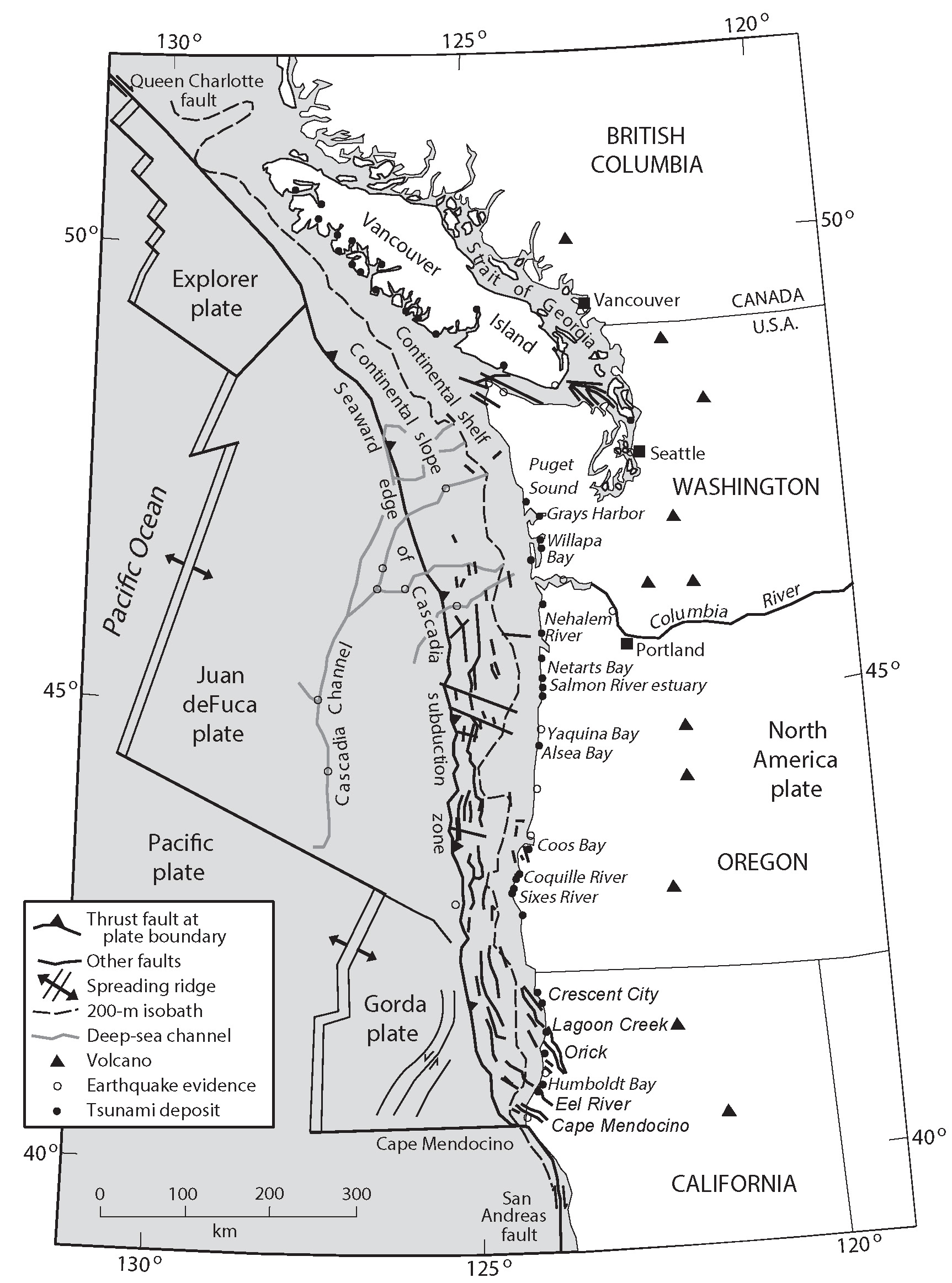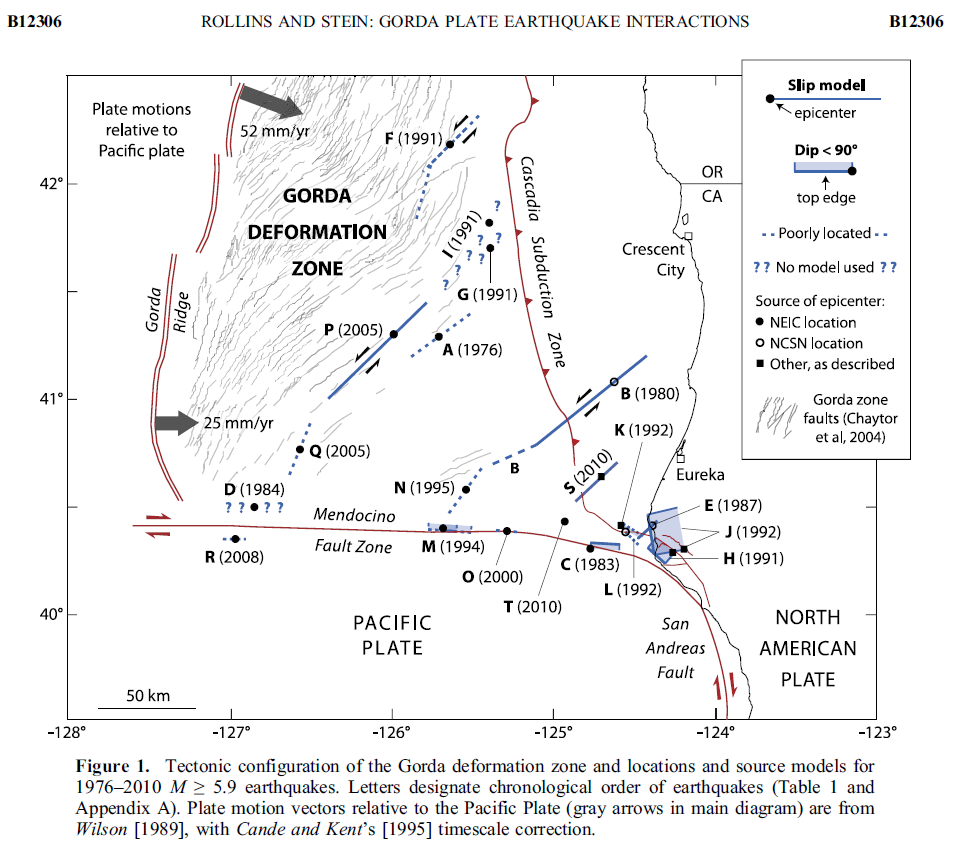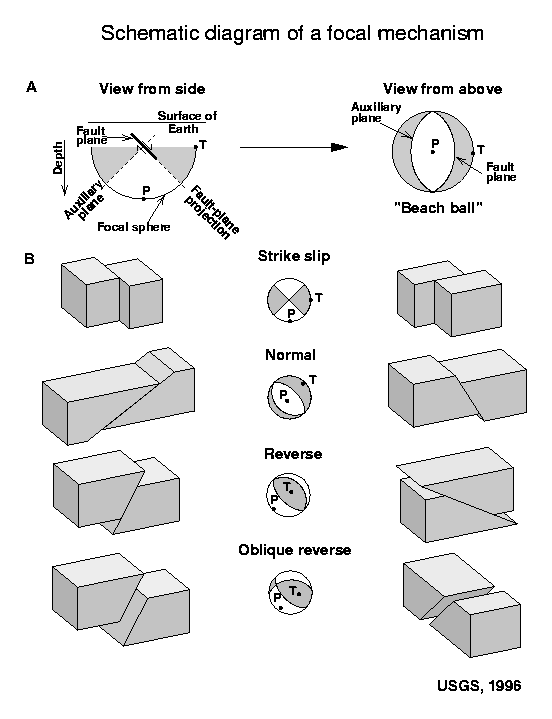We had a small magnitude earthquake “today” along the Mendocino fault system approximately 150 km west of Cape Mendocino. Here is the USGS web page for the Mw 4.8 earthquake. Based upon the tectonic setting, the hypocentral depth, and the moment tensor, I interpret this to be a right-lateral (dextral) strike-slip fault earthquake.
The Mendocino fault is a transform plate boundary that is formed by the strike-slip motion between the Pacific plate to the south and the Gorda plate to the north.
In this map below, I label a number of other significant earthquakes in this Mendocino triple junction region. Another historic right-lateral earthquake on the Mendocino fault system was in 1994. There was a series of earthquakes possibly along the easternmost section of the Mendocino fault system in late January 2015, here is my post about that earthquake series.

The Gorda and Juan de Fuca plates subduct beneath the North America plate to form the Cascadia subduction zone fault system. In 1992 there was a swarm of earthquakes with the magnitude Mw 7.2 Mainshock on 4/25. Initially this earthquake was interpreted to have been on the Cascadia subduction zone (CSZ). The moment tensor shows a compressional mechanism. However the two largest aftershocks on 4/26/1992 (Mw 6.5 and Mw 6.7), had strike-slip moment tensors. These two aftershocks align on what may be the eastern extension of the Mendocino fault.
There have been several series of intra-plate earthquakes in the Gorda plate. Two main shocks that I plot of this type of earthquake are the 1980 (Mw 7.2) and 2005 (Mw 7.2) earthquakes. I place orange lines approximately where the faults are that ruptured in 1980 and 2005. These are also plotted in the Rollins and Stein (2010) figure below. The Gorda plate is being deformed due to compression between the Pacific plate to the south and the Juan de Fuca plate to the north. Due to this north-south compression, the plate is deforming internally so that normal faults that formed at the spreading center (the Gorda Rise) are reactivated as left-lateral strike-slip faults. In 2014, there was another swarm of left-lateral earthquakes in the Gorda plate. I posted some material about the Gorda plate setting on this page.
Here is a map of the CSZ that shows the orientation and configuration of these left-lateral strike-slip faults within the Gorda plate (modified from Nelson et al., 2006).

Here is a map from Rollins and Stein, showing their interpretations of different historic earthquakes in the region. This was published in response to the January 2010 Gorda plate earthquake. The faults are from Chaytor et al. (2004). The 1980, 1992, 1994, 2005, and 2010 earthquakes are plotted and labeled. I did not mention the 2010 earthquake, but it most likely was just like 1980 and 2005, a left-lateral strike-slip earthquake on a northeast striking fault.

-
Here is a list of the USGS web pages for the earthquakes on the above map.
- 1980 Mw 7.2
- 1992 Mw 7.2
- 1992 Mw 6.5
- 1994 Mw 6.7
- 1994 Mw 7.1
- 2005 Mw 7.2
- 2015 Mw 4.8
Here is a primer for those that want to learn about moment tensors (MT) and focal mechanisms (FM). While MT and FM are determined differently, their graphical depiction is analogous. Here is the USGS web page that describes the figure below in detail. Here is the USGS web page that describes how a moment tensor is determined.

References:
- Chaytor, J.D., Goldfinger, C., Dziak, R.P., and Fox, C.G., 2004. Active deformation of the Gorda plate: Constraining deformation models with new geophysical data: Geology v. 32, p. 353-356.
- Nelson, A.R., Kelsey, H.M., and Witter, R.C., 2006. Great earthquakes of variable magnitude at the Cascadia subduction zone: Quaternary Research, doi:10.1016/j.yqres.2006.02.009, p. 354-365.
- Rollins, J.C. and Stein, R.S., 2010. Coulomb stress interactions among M ≥ 5.9 earthquakes in the Gorda deformation zone and on the Mendocino Fault Zone, Cascadia subduction zone, and northern San Andreas Fault: Journal of Geophysical Research, v. 115, B12306, doi:10.1029/2009JB007117, 2010.
5 thoughts on “Mendocino fault earthquake”